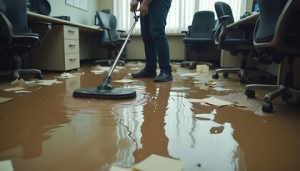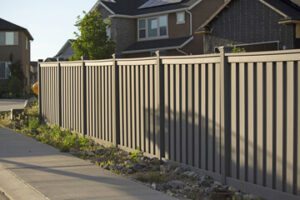A piano is a large and heavy instrument that requires specialized equipment to safely transport. Trying to move one yourself can cause damage to the piano, furniture and walls, and you could get seriously injured in the process.
Choosing experienced Piano Movers Denver will save you money and ensure that your piano is transported with care. Here are 4 reasons why you should choose a Piano Moving Company:
Expertise

Pianos are an intricate instrument made of thousands of delicate parts like keys, strings, and a wooden frame. Even the slightest impact can cause significant damage to the inner workings. Piano movers are trained to protect these delicate components, ensuring that the piano arrives at its destination in perfect condition. They are also familiar with the specialized equipment and tools required for moving such an item. This makes them a better option than a family member who is trying to save money by attempting the move themselves.
While it is possible to move most household items with the help of friends and family, there are some things that should only be moved by professionals. One of the most challenging items to transport is a piano, which is heavy and fragile. Hiring a professional moving company is the best way to ensure that your piano is transported safely. A reputable company will provide a written quote and will offer insurance in case of any damage.
It is important to hire local piano movers for your relocation. You can find them by checking reviews on Google Maps and business directories. You should look for piano-specific reviews to make sure that the movers specialize in this type of transportation. This will prevent you from hiring a moving company that is not well-suited to the job.
Hiring local piano movers can save you time and money. Piano movers have honed methods that allow them to move pianos quickly and without any damage. In addition, they have access to specialized equipment and tools that can help them navigate tight spaces. They can also save you the cost of buying a truck and dollies yourself.
In addition to their expertise, piano movers are familiar with the unique challenges of New York City moves. The city’s apartments, condos, and townhomes often have narrow hallways, stairways, and corners that make it difficult to move large items. Piano movers are skilled at maneuvering such tight turns, minimizing the risk of damaging your piano or getting hurt. They also understand how different climates can affect pianos, and they take extra precautions to ensure that your piano arrives in its new home in good condition.
Insurance
Pianos hold both sentimental and monetary value, making them a prized possession that needs to be carefully handled during relocation. This is why it is essential to enlist the services of professionals when relocating your instrument, rather than trying to handle the move on your own. Piano movers offer many invaluable benefits to their clients, including comprehensive insurance coverage that protects your piano and home in case of damage during the moving process.
When choosing a piano mover, ask about their level of experience and specialized equipment. Ask what type of pianos they have experience with, as different types require varying techniques. Also, inquire about the equipment they use to transport pianos, such as cradles and padded dollies that minimize strain on the instrument during transportation. Lastly, make sure that they have liability insurance in case of accidental damage during the move.
While anybody can try to move a piano, it’s almost always more cost-effective and safer to hire professional piano movers. This is because the risks involved in attempting to move a piano are far more significant than the typical household items that they typically move for customers.
Household movers generally do not have the strength or equipment necessary to safely and securely transport a piano. Piano movers are stronger and more experienced, making them the best option for moving this large and delicate instrument.
The insurance coverage that piano movers provide covers physical damage to your instrument, such as scratches and dents. It also provides protection for the internal components of your piano, including the strings and hammers. Additionally, piano insurance offers coverage for theft or loss of your instrument during the move. You can choose between full replacement value or released value insurance coverage.
In addition to the monetary and emotional costs of an accident, there is also the intangible cost of stress and inconvenience. Hiring a team of experienced piano movers can save you the time and money that would be spent fixing your piano or repairing your home after an accident. With the peace of mind that comes with knowing your piano is covered in the event of an accident, you can focus on preparing for your big move and enjoy the experience.
Time
The time it takes to move a piano depends on several factors, including its size, complexity, and distance. However, professional piano movers know how to move these delicate instruments with efficiency and safety. They also use specialized equipment to ensure that the piano is secure throughout the process, reducing the risk of damage and ensuring a smooth transition. Additionally, piano movers are insured, offering peace of mind that any damages will be covered.
Moving a piano is not an easy task, but it is an important one. These delicate instruments have many moving parts and are prone to scratches and other damage during transport. If not handled properly, this damage can affect the performance of the instrument and require expensive repairs or replacements. This is why it’s important to hire a team of professionals to help you move your piano. Professional piano movers are trained to handle the instrument with care and precision, minimizing the risk of damage.
They use a variety of tools to protect the piano during transportation, including padded blankets, dollies, and custom boards. In addition, they have access to special trucks that are equipped with lift gates. This eliminates the need for excessive manual lifting, which can reduce the risk of injury to the movers and the piano. In addition, they are familiar with the unique requirements of moving a piano in different types of buildings, including high-rise apartments and traditional homes.
The best way to minimize the time it takes to move a piano is to prepare ahead of time. This means measuring the dimensions of the piano and the space where it will be placed in the new location. This will allow you to determine the ideal method of transportation, preventing any surprises on the day of the move. It’s also a good idea to ask for an estimate from the movers, so that you can budget accordingly. This will save you time and money in the long run. It will also make the entire process more stress-free for you, as you’ll know that your piano is in the hands of professionals who will handle it with the utmost care.
Money
Pianos are expensive instruments that require special care. Moving them without the help of professional movers can lead to damage and costly repairs. It is also a risky task because of the weight and size of the instrument. A small mistake could lead to irreparable damage to the internal mechanism, strings, or even the exterior finish. Piano movers are well-versed in the process of moving these complicated instruments, and they have refined it to a science. Their experience makes them efficient at completing the job and prevents damages.
While it’s true that professional movers charge more than amateurs, they offer greater value for your money. In addition to their expertise, piano movers have the right tools for the job. They use padded blankets, dollies, and custom boards to transport the pianos safely. These tools are designed to protect the instrument’s interior and exterior finishes, as well as the floor and walls of your home. They also have the proper trucks to accommodate large items, and they clear the path through the doors to ensure safe transportation.
Depending on the type of piano, the amount of labor required to move it, and other factors, Piano Movers cost varies. For example, spinet pianos are usually cheaper to move than grand pianos. However, the amount of stairs to be climbed, the need for a crane lift, and other extras add to the overall costs.
Professional movers follow a thorough process that begins with an evaluation of the piano and its surroundings. They then use furniture blankets and other protective materials to prevent scratches and dents during transport. In addition, they use straps to secure the instrument in place and to prevent it from shifting during transit. They also take steps to prevent moisture damage, which can cause the piano to sound out of tune and may need costly repairs.
If you’re looking for a piano mover in your area, you can find experienced professionals on Airtasker. Simply create a task and provide details about your piano, including its location, to get a quote. You can even attach a photo to your task for an accurate estimate.

